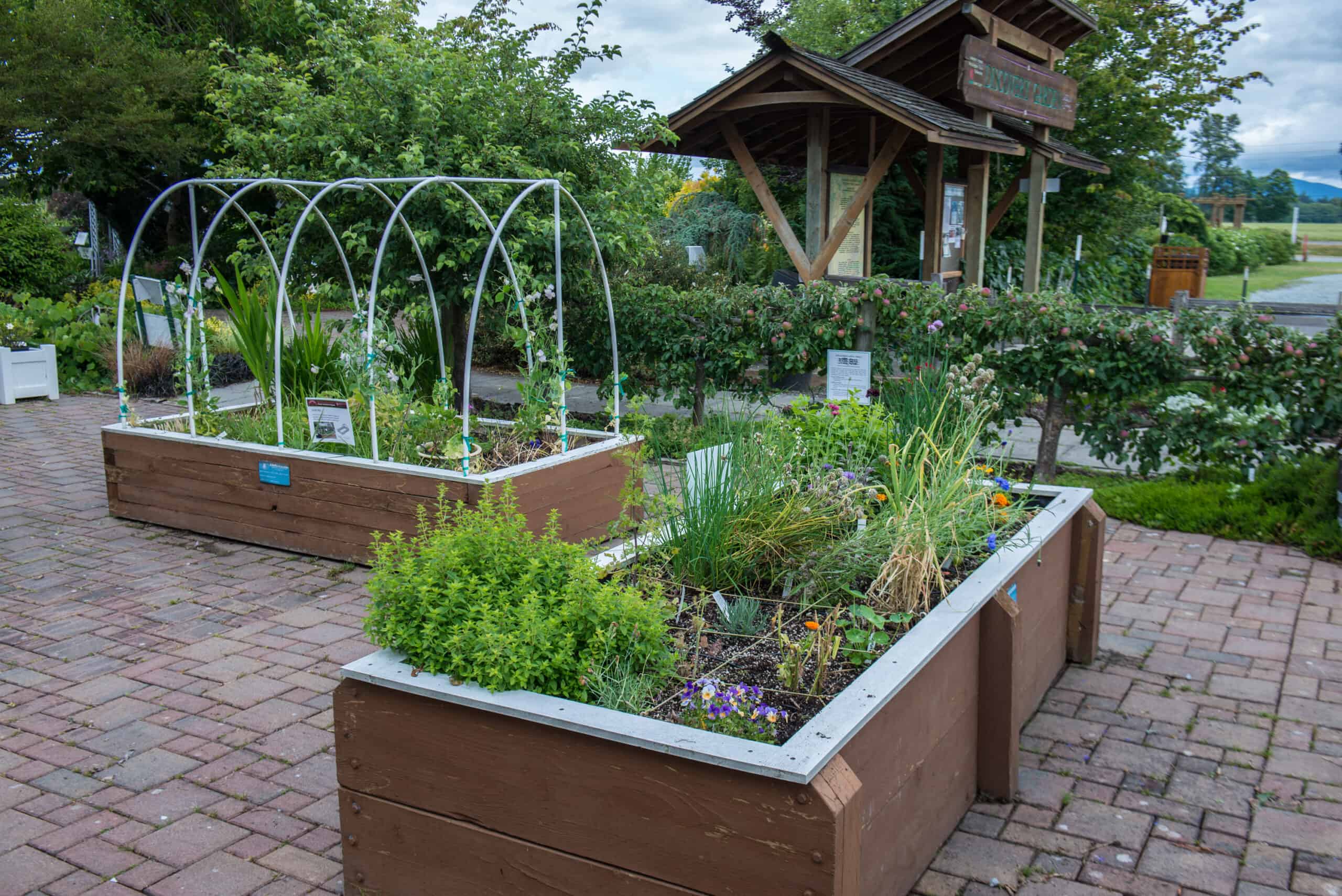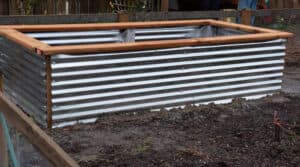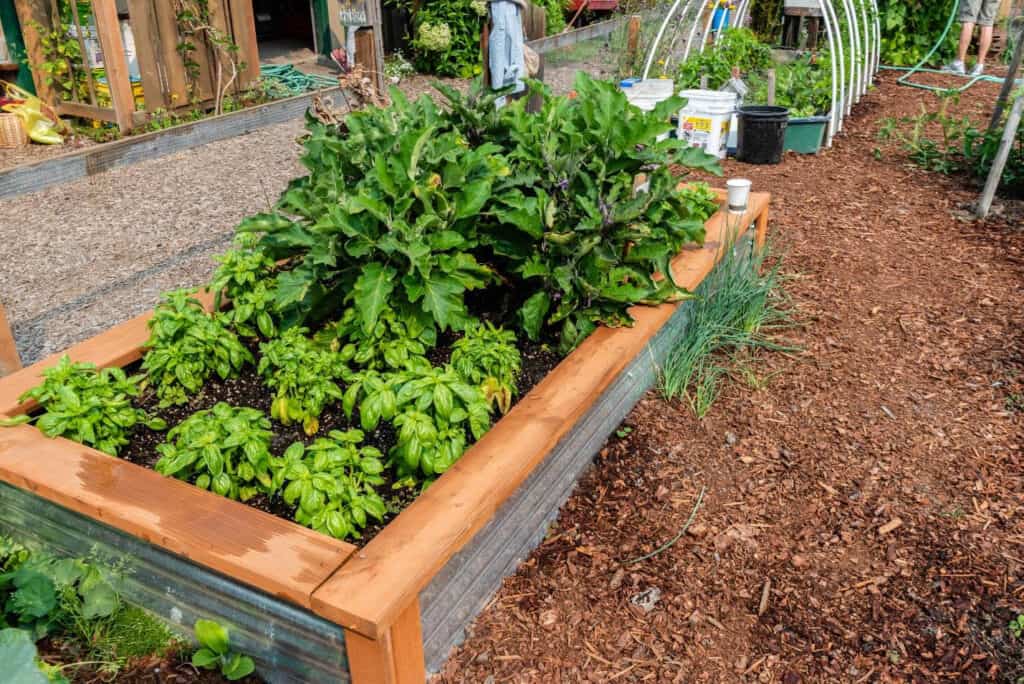Raised Beds


Gardening with Raised Beds
Raised Beds Provide Many Advantages to Home Gardeners
Editor's Note:
As the daylight hours continue to wane, many gardeners turn their attention to planning for next season. Some of us even have a Christmas wish list which has been known to be filled with tools and even projects that will enhance our gardening endeavors. For this reason, the Ask a Master Gardener Blog editors are reprinting a favorite article, complete with plans, a materials list, and updated references which answer one of the most asked questions at plant clinics and market kiosks ---“How do I build a raised bed garden?"
_ _ _
By Dave Buchan, Skagit County WSU Extension Master Gardener
Want to grow better vegetables but concerned about poor soil quality in your garden plot? Are you frustrated with continually trying to amend your soil for better growing but getting nowhere? Do you have site conditions or drainage problems that prevent establishing a good garden? Your solution might be gardening with raised beds.
What is a Raised Garden Bed?
A raised bed is really nothing more than a device containing a vertical column of quality soil to create the best possible growing conditions for your garden. Raised beds can vary greatly in size, but typical garden beds are generally 12 to 24-inches in height and about 4-feet in width. Your ideal width may vary, but a 4-foot width is a dimension that most gardeners use because you can easily tend half the garden from one side, and then the other half from the other side. Length can vary depending on space and site conditions. Some gardeners choose raised beds up to 16-feet long.
Why Use Raised Garden Beds?

Raised beds offer many advantages for gardeners. Most importantly, raised beds allow you to control the quality of your soil. Soil quality is the number one consideration for successful gardening. The second major advantage of raised beds is that you can garden without getting down on your hands and knees to tend your garden. For older gardeners, this is a real benefit and can make gardening more fun. Placing a wood or metal “seat rail” on top of each side of the raised bed allows you to sit on the edge of the planter for easier weeding or tending.
Another advantage with raised beds is that with bed sidewalls exposed to the sun, soil temperature in the beds can be slightly higher than with a normal garden. And surprisingly, a simple degree or two in soil temperature can make a big difference in the growth of your plants.
Other benefits of raised beds are that: (1) vegetables can be planted a bit closer together and thereby a better yield per square foot of garden space, and (2) raised bed soil will not be as compacted as normal garden soil. There are no rows between plants that are walked on and no wheelbarrows traveling over to compact the soil. Less compaction means more fertile soil for better plant growth.
What Types of Raised Beds are Commonly Used?
Raised beds are made from many materials: stone, concrete block, concrete riprap, treated or plain lumber, galvanized steel panels, railroad ties, and more. Whatever material is used the structure needs to be strong and durable. You can imagine that a well-watered 18 to 24-inch high column of soil carries a lot of weight, especially laterally. So, your “container” needs to be strong enough to support that soil weight. If you’re not too handy, there are raised bed kits available online and in some box stores. These kits can vary in quality and durability, so take care choosing a unit that will work for the long haul.
If money is no object, you can buy commercial galvanized steel feed troughs as your raised bed. They come in a variety of sizes and are sturdy, good-looking, and will last years. Simply drill a series of ½ inch holes in the bottom for good drainage and VOILA! —a great raised bed.
More likely, you will choose to make your raised beds using materials that are commonly available from local stores or surplus outlets, such as treated or kiln-dried lumber, concrete block, concrete riprap, stone, or galvanized steel panels.

Material Considerations
Concrete block: Concrete block can make a good raised bed, but you need to be prepared to spend some time tweaking and adjusting rows of blocks. You need to start with a level site. Blocks are heavy to work with and even a slight change in ground level on the first row can translate to a bigger problem on the second row. This requires patience and some determination to get it right.
Stone or riprap concrete: If you have a supply of stone or riprap to use, great. But this can be heavy work and you need to be careful with stacking stone or concrete to create a solid structure that will last.
Treated or kiln-dried lumber: All wood will eventually rot, even treated wood. Whenever wood is in contact with soil, wood will begin to deteriorate. Especially at today’s lumber prices, you want your investment in a raised bed to provide years of reliable service. There are techniques to add to the life of wood used in raised beds, which are discussed in the website materials described below. Caution: Chemicals used to treat lumber can leach into the soil and contaminate the plants being grown.

Corrugated galvanized steel panels: From both a cost and durability perspective corrugated galvanized steel side panels with treated wood corner posts and treated wood seat rails are sturdy and long-lasting. The steel panels are lightweight and easily cut with metal shears, skill saw or jig saw with metal cutting blades. These materials are available at almost any hardware or box store. The galvanized steel sidewalls will last many years and will not leach chemicals into the soil as can some treated wood. Placing a treated 2-foot by 6-foot board horizontally across the top of each sidewall creates a handy seat for use when weeding and tending your garden.
If you’d like to learn more about how to build this raised bed, download the pdf here> which includes detailed “how to” information, complete with construction diagrams, instructions, materials list, and cost estimates for a typical 4-foot by 8-foot by 2-foot-high raised bed.
REFERENCES:
Boeckmann, C. A step-by-step guide to building an easy DIY raised garden bed. Updated July 26, 2023. https://www.almanac.com/content/how-build-raised-garden-bed/
Cogger, C. Raised beds: will they benefit your garden. https://pubs.extension.wsu.edu/raised-beds-deciding-if-they-benefit-your-vegetable-garden-home-garden-series
Faust, A. Finlay, E. How to Construct a Raised Bed in the Garden. July 5, 2023. Penn State Extension. https://extension.psu.edu/how-to-construct-a-raised-bed-in-the-garden
 ABOUT THE AUTHOR:
ABOUT THE AUTHOR:
Dave Buchan has been a Skagit County WSU Extension Master Gardener since 2012.
Questions about home gardening or becoming a Master Gardener, may be directed to: Skagit County WSU Extension Office, 11768 Westar Lane, Suite A, Burlington, WA 98233; by phone: 360-428-4270; or via the website: https://extension.wsu.edu/skagit/mg/